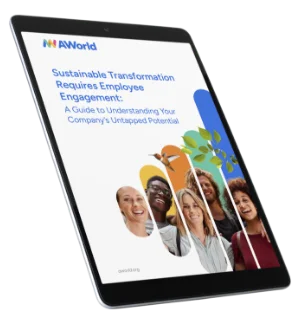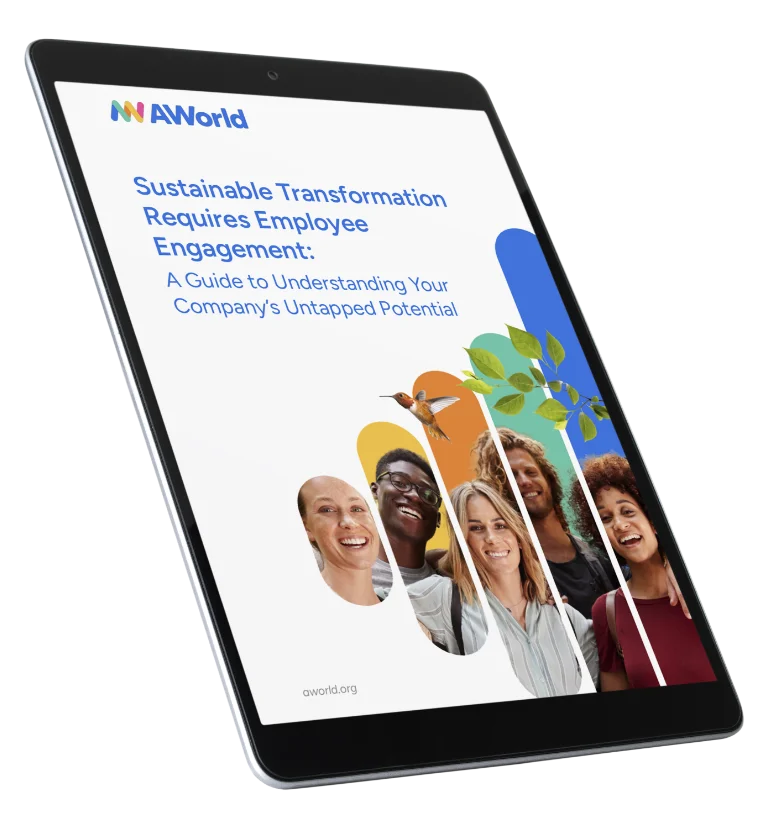Environmental sustainability is no longer just a buzzword; it has become a pressing global issue that demands immediate attention.
The detrimental effects of climate change and resource depletion are becoming increasingly apparent, leading to a growing recognition of the need for sustainable practices in all aspects of life.
Among various sectors, offices have emerged as key players in the journey towards a greener future. With countless businesses operating within office spaces worldwide, these workplaces have a significant environmental footprint. By implementing sustainable practices, organizations have the power to generate a substantial positive impact not only on the planet but also on a broader scale.
Continue reading to explore the numerous advantages that offices can derive from enhancing their sustainability efforts, alongside a selection of straightforward and impactful green activities that can be implemented.
Advantages derived from enhancing office sustainability
The benefits derived from creating a more sustainable office go far beyond the positive impact on the environment. In fact, adopting sustainable initiatives can lead to:
- Cost savings: implementing sustainable practices can lead to significant cost reductions over time. Energy-efficient measures, such as utilizing LED lighting or optimizing heating and cooling systems, can result in lower utility bills. Additionally, reducing waste through recycling and responsible procurement can minimize disposal expenses.
- Enhanced corporate reputation: demonstrating a commitment to sustainability can bolster an office’s reputation and brand image. Customers and stakeholders increasingly value environmentally responsible organizations, leading to improved trust, loyalty, and positive public perception.
- Attraction and retention of talent: embracing sustainability can be an attractive factor for prospective employees, especially among the younger workforce who prioritize socially and environmentally conscious workplaces. It also promotes employee engagement and retention, as staff members tend to feel proud to be associated with an organization that shares their values.
- Improved employee well-being and productivity: a sustainable office environment can contribute to enhanced employee well-being and productivity. Incorporating elements such as natural lighting, indoor plants, and proper ventilation can create a more pleasant and healthy workspace, reducing stress levels and boosting productivity.
- Compliance with regulations: by implementing sustainable practices, offices can ensure compliance with existing and upcoming environmental regulations. Staying ahead of regulatory requirements not only mitigates the risk of penalties but also demonstrates a commitment to operating within legal and ethical frameworks.
- Innovation and competitiveness: embracing sustainability often fosters innovation and creativity within an office. It encourages employees to seek out more efficient and eco-friendly solutions, leading to potential breakthroughs and a competitive edge in the market.
How can a company become greener?
Becoming a greener company involves adopting sustainable practices and reducing environmental impact across various aspects of the business. To effectively progress towards this objective and establish a greener office, a phased approach is highly recommended. By implementing a specific strategy, one can gradually transform the office into an eco-friendly environment. Let’s explore some of these strategies together!
Green transportation options
Encourage employees to use public transportation, carpooling, cycling, or walking for their daily commute. Provide incentives such as preferred parking for eco-friendly vehicles or subsidies for public transportation passes.
Waste walks
Frequently, people become accustomed to the presence of litter in their surroundings, but it is crucial to address this environmental issue. Organizing waste walks with employees provides a tangible opportunity to make a difference. This simple yet impactful activity not only contributes to a cleaner environment but also instils a sense of empowerment and responsibility among a company’s employees.
Vegetarian lunch options
Incorporate a diverse range of vegetarian meals into the office lunch menu. Encouraging employees to opt for plant-based choices not only promotes their well-being but also reduces the environmental impact associated with meat consumption.
Energy efficiency measures
Conduct an energy audit to identify areas of high energy consumption and implement energy-efficient practices such as LED lighting, smart thermostats, and power-saving settings on office equipment.
Recycling program
Encourage employees to collect, separate, and properly dispose or recycle various types of waste generated within the workplace.
Waste reduction
Identify areas where waste can be reduced or eliminated, such as implementing paperless processes and digital documentation to minimize paper waste. Offices can also promote the use of reusable products like utensils, water bottles, and coffee mugs, reducing the reliance on single-use items.
Hybrid working mode
Embrace the concept of hybrid work models, which have gained significant traction in recent years. By allowing employees to work from home more frequently, a company can minimize the need for daily commuting and achieve a notable environmental benefit while meeting its employees’ expectations.
Eco-cleaning products
Maintain a green office by prioritizing cleaning products that are safe for individuals and the environment. Opt for items that carry eco-friendly certifications and labels, ensuring they meet stringent environmental standards. Choosing certified eco-friendly cleaning products promotes a healthier office environment and reduces our environmental impact by minimizing harmful chemicals and toxins.
Green competitions
Consider organizing green competition events to create a fun and inclusive workplace culture while benefiting the planet. Allow employees to participate in contests aligned with their interests, such as recycling challenges or energy-saving competitions. By offering eco-friendly prizes, an organization can incentivize participation, reward winners, promote team building, foster a positive work environment and contribute to a more sustainable future.
Education and employee engagement
These two aspects play a vital role in driving sustainable practices within a company. By creating awareness, providing training, encouraging idea-sharing, and involving employees in green initiatives, a company can harness the collective power of its workforce to create positive environmental change and embed sustainability into the corporate culture. A useful tool for this purpose is AWorld, a sustainable app that can help educate and engage employees in an organization’s sustainability journey.
AWorld: what is it and how does it work?
AWorld is a dedicated platform designed to actively support and contribute to the United Nations’ ActNow campaign in the digital space. It offers a comprehensive range of tools to foster sustainability education and engagement at different levels: individual, corporate, institutional, and governmental. AWorld empowers companies by providing them with the means to educate and engage every employee in their sustainability goals through an effective combination of information, training, gamification, and behavioural science.
With AWorld, companies can create their own teams and issue challenges within them, setting goals that all participants strive to achieve. This approach encourages employees to actively participate and adopt sustainable practices that contribute to making companies increasingly environmentally friendly. The app allows companies to track and monitor all the positive actions performed, keeping a record of their employees’ accomplishments.
These challenges can focus on reducing water consumption, electricity usage, and CO2 emissions or achieving a specific number of actions beneficial to the planet. Once a challenge is launched and the goal is defined, the app suggests a series of good actions and habits that each employee can incorporate into their daily lives. These actions contribute to the set goal and have a positive impact on the environment. Moreover, it can foster friendly competition among employees, inspiring them to accomplish as many positive environmental actions as possible throughout the day.
The actions within the app are categorized by sectors, such as energy, food, mobility, shopping, society, travel, waste, water, and wellness. Each sector offers a wide range of suggested actions, including:
- Energy: turning off lights, unplugging devices, storing files in the cloud, using the stairs instead of elevators, and powering off computers when not in use.
- Food: choosing vegetarian meals, taking leftovers home, opting for expired products or organic produce.
- Mobility: walking instead of using public transportation, carpooling, attending remote meetings, choosing electric vehicles over gasoline-powered ones.
- Shopping: investing in ESG funds, purchasing second-hand clothes, choosing refurbished electronic devices, and repairing appliances or gadgets.
- Society: donating clothes, volunteering, joining environmental organizations, and inviting others to use AWorld.
- Travel: opting for trains instead of planes, going camping, booking eco-friendly accommodations, and bringing travel-sized products.
- Waste: picking up litter, reusing water bottles, recycling plastics, paper, and glass, printing in black and white and double-sided, and using reusable bags.
- Water: turning off the faucet while soaping up, brushing teeth, washing dishes, and taking shorter showers.
- Wellness: meditating for 5 minutes, planting trees or flowers, and reading books.
At the end of the challenge, AWorld provides a report containing all the results achieved in reference to the set goal, as well as the number of employees who participated, the engagement rate, the total number of actions taken, the water, energy and CO2 savings and the Sustainable Development Goals achieved.
Conclusion
Embracing sustainability within office spaces offers numerous advantages that extend beyond environmental benefits.
From cost savings to enhanced corporate reputation, attraction and retention of talent, improved employee well-being and productivity, compliance with regulations, and fostering innovation, the advantages of sustainable practices are significant. By implementing green initiatives such as promoting green transportation, waste reduction, energy efficiency, and engaging employees through education, competitions, and the use of sustainable apps like AWorld, offices can play a crucial role in creating a greener future. It is through these collective efforts that we can build a more sustainable and resilient world for generations to come.





